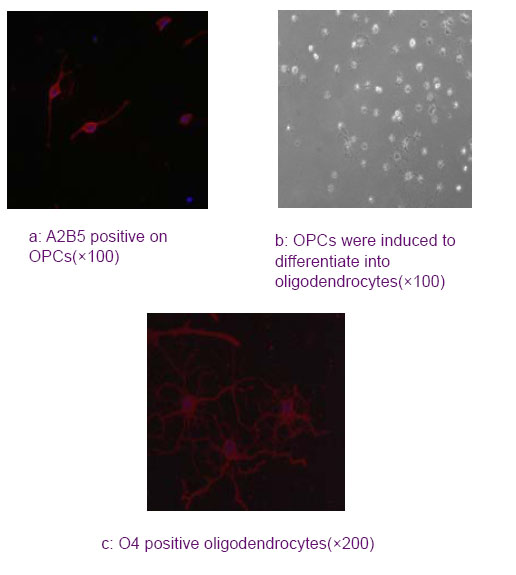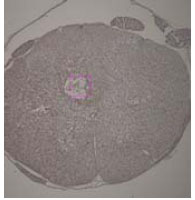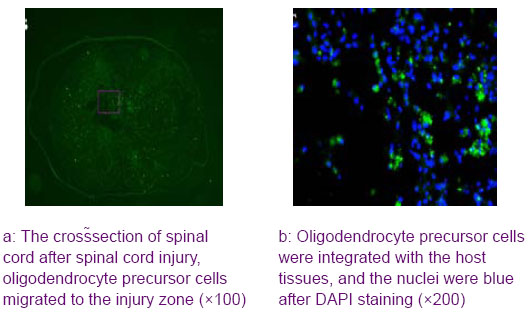| [1] Kohout RK, Saunders LL, Krause JS. The relationship between prescription medication use and ability to ambulate distances after spinal cord injury. Arch Phys Med Rehabil. 2011;92(8):1246-1249.[2] Gorzkowski J, Kelly EH, Klaas SJ, et al. Obstacles to community participation among youth with spinal cord injury.J Spinal Cord Med. 2011;34(6):576-585. [3] Tu?cu I, Tok F, Y?lmaz B, et al. Epidemiologic data of the patients with spinal cord injury: seven years' experience of a single center. Ulus Travma Acil Cerrahi Derg. 2011;17(6): 533-538.[4] Lee JH, Chung WH, Kang EH, et al. Schwann cell-like remyelination following transplantation of human umbilical cord blood (hUCB)-derived mesenchymal stem cells in dogs with acute spinal cord injury.J Neurol Sci. 2011;300(1-2): 86-96. [5] Ward RE, Huang W, Curran OE, et al. Docosahexaenoic acid prevents white matter damage after spinal cord injury.J Neurotrauma. 2010;27(10):1769-1780.[6] Faulkner J, Keirstead HS. Human embryonic stem cell-derived oligodendrocyte progenitors for the treatment of spinal cord injury. Transpl Immunol. 2005;15(2):131-142.[7] Tian B, Liu HW, Wu SL, et al. Zhongguo Linchuang Kangfu. 2003;9(25):3430-3431.田波,刘慧雯,吴树亮,等.大鼠胎脑神经细胞与胶原复合体移植对脑损伤的修复[J].中国临床康复,2003,9(25):3430-3431.[8] Mekhail M, Almazan G, Tabrizian M. Oligodendrocyte-protection and remyelination post-spinal cord injuries: a review.Prog Neurobiol. 2012;96(3):322-339. [9] Lü HZ, Wang YX, Zhou JS, et al. Cyclosporin A increases recovery after spinal cord injury but does not improve myelination by oligodendrocyte progenitor cell transplantation. BMC Neurosci. 2010;11:127.[10] Allen AR.Surgery of experimental lesion of spinal cord equivalent to crush injury of facture dislocatoon od spinal colum.JAMA. l911;57:878-880.[11] Basso DM, Beattie MS, Bresnahan JC. A sensitive and reliable locomotor rating scale for open field testing in rats. J Neurotrauma. 1995;12(1):1-21.[12] Baumann N, Pham-Dinh D. Biology of oligodendrocyte and myelin in the mammalian central nervous system. Physiol Rev. 2001;81(2):871-927.[13] Siebert JR, Stelzner DJ, Osterhout DJ. Chondroitinase treatment following spinal contusion injury increases migration of oligodendrocyte progenitor cells. Exp Neurol. 2011;231(1):19-29.[14] Lü HZ, Wang YX, Zou J, et al. Differentiation of neural precursor cell-derived oligodendrocyte progenitor cells following transplantation into normal and injured spinal cords.Differentiation. 2010;80(4-5):228-240.[15] Cao Q, He Q, Wang Y, et al. Transplantation of ciliary neurotrophic factor-expressing adult oligodendrocyte precursor cells promotes remyelination and functional recovery after spinal cord injury.J Neurosci. 2010;30(8): 2989-3001.[16] Lytle JM, Chittajallu R, Wrathall JR, et al. NG2 cell response in the CNP-EGFP mouse after contusive spinal cord injury. Glia. 2009;57(3):270-285.[17] Mayer-Proschel M, Kalyani AJ, Mujtaba T, et al. Isolation of lineage-restricted neuronal precursors from multipotent neuroepithelial stem cells. Neuron. 1997;19(4):773-785.[18] Kerr CL, Letzen BS, Hill CM, et al. Efficient differentiation of human embryonic stem cells into oligodendrocyte progenitors for application in a rat contusion model of spinal cord injury.Int J Neurosci. 2010;120(4):305-313.[19] Saxena T, Gilbert JL, Stelzner D, et al. Mechanical Characterization of the Injured Spinal Cord Following Lateral Spinal Hemisection Injury in the Rat. J Neurotrauma. 2012 Mar 21.[20] Lee SM, Yune TY, Kim SJ, et al. Minocycline reduces cell death and improves functional recovery after traumatic spinal cord injury in the rat. J Neurotrauma. 2003;20(10):1017-1027. |



